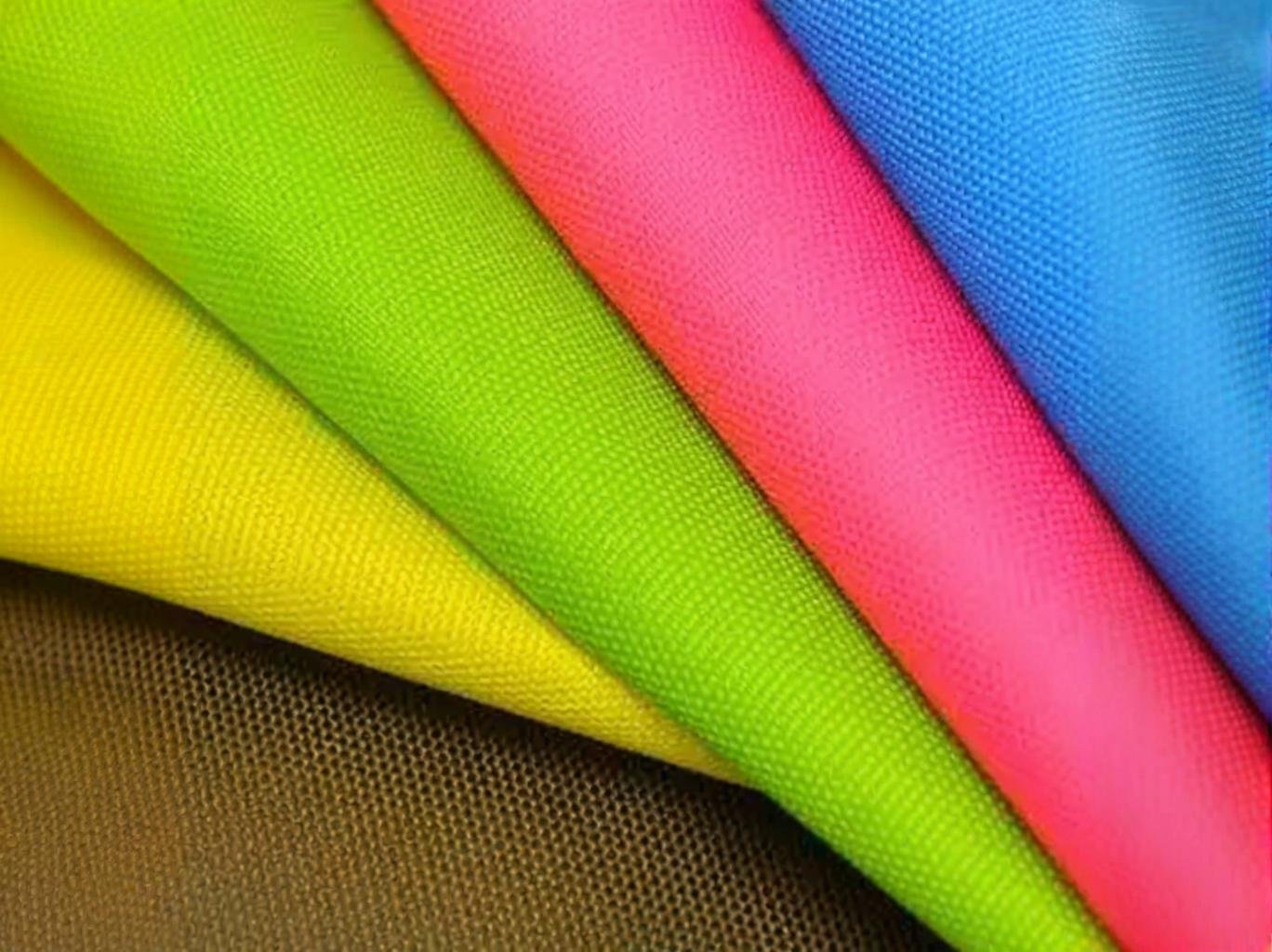Cotton Silk Fabric: The Perfect Blend of Comfort and Luxury for High-End Fashion
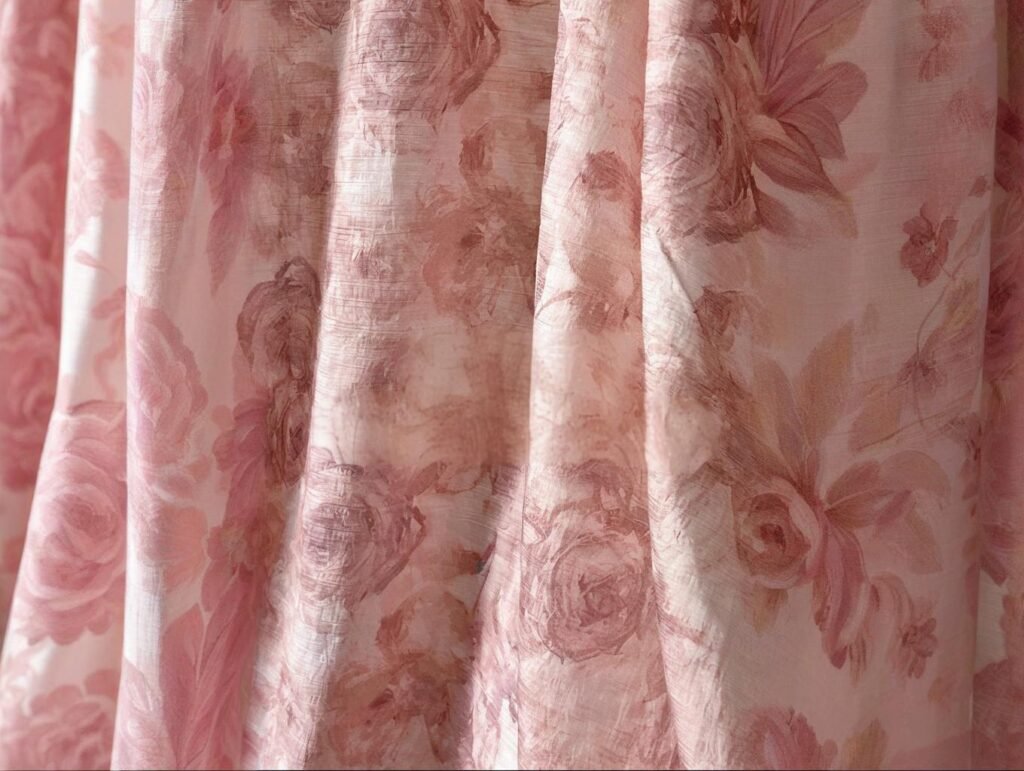
In the ever-evolving world of luxury fashion, one material continues to charm both designers and wearers with its dual personality — cotton silk fabric. It feels like a whisper on the skin, yet it holds a refined elegance that rivals pure silk. As fashion moves toward more conscious consumption and versatile wardrobe staples, cotton silk stands out as the bridge between natural softness and elevated sophistication.
Cotton silk fabric is a blended textile combining the breathable, absorbent qualities of cotton with the smooth, lustrous appeal of silk. It offers wearers year-round comfort and gives designers a dynamic canvas to work with in high-end fashion.
Unlike traditional fabrics that force a compromise between comfort and glamor, cotton silk creates synergy. It’s being featured not only in haute couture but also in luxury ready-to-wear, bridal collections, and artisan resort wear. From a Parisian evening gown to a Mumbai handloom kurta, cotton silk quietly threads itself into every cultural expression of elegance.
So why are more designers turning to this hybrid textile? Let’s unfold the story of cotton silk, beginning with its composition and weaving process.
What Is Cotton Silk Fabric and How Is It Made?
Cotton silk fabric is a blended textile, typically made from a mix of 70–80% cotton and 20–30% natural silk fibers, though ratios vary based on desired drape, luster, and strength. The goal is to retain cotton’s breathability and affordability while adding the smoothness, shine, and fluidity that silk is celebrated for.
Cotton silk fabric is a hybrid textile made by blending cotton and silk fibers. It is woven to deliver both the softness of cotton and the sheen of silk, commonly used in high-end fashion for its comfort and elegance.
How Cotton Silk Is Produced
1. Blending Fiber Ratios
- 70/30 Cotton-Silk is common for mid-weight fabrics like dresses or shirts.
- 50/50 Blends offer balanced drape and are used for scarves or bridal wear.
- 80/20 Cotton-Silk favors affordability with light silk infusion.
2. Yarn Preparation
- Carded cotton is spun with reeled silk or spun silk, depending on cost and effect.
- Mercerization can be applied to enhance shine on the cotton component.
3. Weaving Techniques
- Popular weaves include plain, satin, and jacquard.
- India, China, and Italy lead in jacquard and brocade-style cotton silk fabrics.
4. Finishing & Dyeing
- Reactive dyeing is often used for cotton fibers, while acid dyes handle the silk.
- Eco-friendly, azo-free dyes are growing in use for sustainable cotton silk.
📊 Table: Common Cotton Silk Blend Types
| Blend Ratio | Appearance | Feel | Common Use |
|---|---|---|---|
| 70% Cotton / 30% Silk | Subtle shine, breathable | Soft with body | Summer shirts, blouses, scarves |
| 50% Cotton / 50% Silk | Balanced sheen and drape | Lightweight, flowy | Wedding attire, formal dresses |
| 80% Cotton / 20% Silk | Mostly matte, soft | Budget-friendly smoothness | Pajamas, casual wear |
In 2022, an Italian heritage brand began producing limited-edition cotton silk trench coats with a 60/40 blend to meet demand for lightweight transitional wear in Northern Europe. The brand reported:
- A 37% increase in customer satisfaction over cotton-only products.
- 23% fewer returns due to better garment breathability and feel.
How Does Cotton Silk Compare to Pure Silk and Pure Cotton?
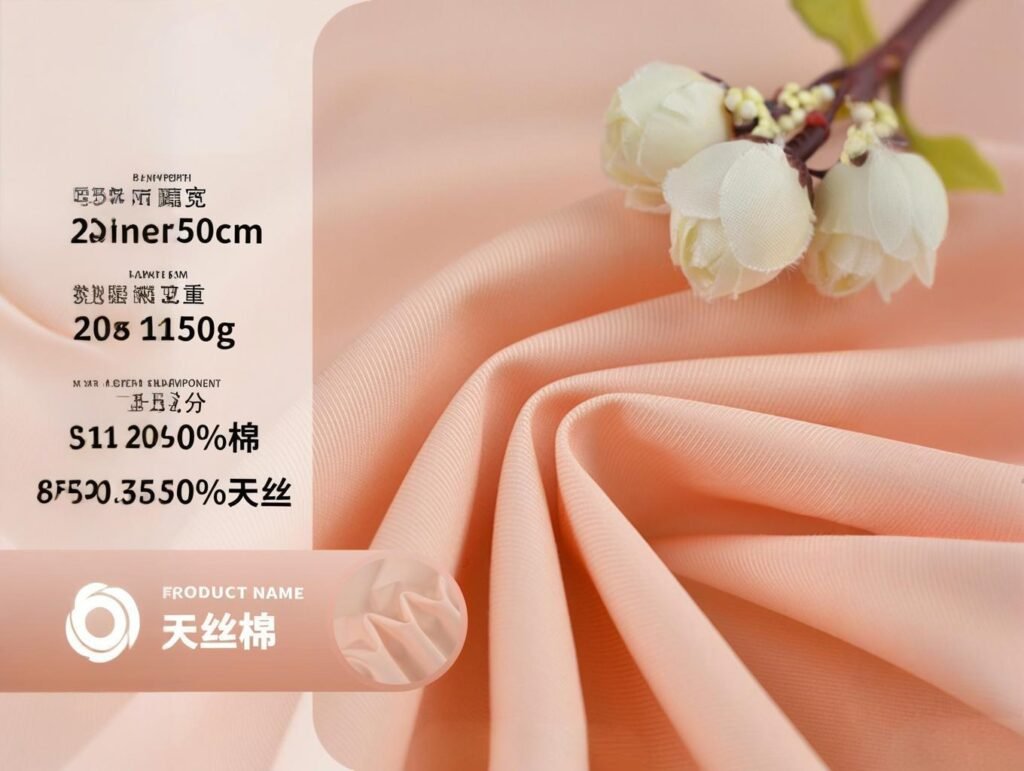
Cotton silk offers the best of both worlds but sits in a different category from 100% silk or cotton. It sacrifices some of the extreme sheen and delicacy of silk for structure and cost-efficiency, while upgrading cotton with a smoother touch and refined appearance.
Cotton silk is softer and shinier than pure cotton, but more breathable and affordable than pure silk. It provides a middle ground in terms of texture, durability, and price.
Fabric Comparison Table
| Property | Pure Cotton | Cotton Silk Blend | Pure Silk |
|---|---|---|---|
| Texture | Soft, matte | Soft + smooth | Silky, ultra-smooth |
| Breathability | Excellent | Very good | Moderate |
| Durability | High | Medium-High | Lower |
| Cost | Low | Moderate | High |
| Shine/Sheen | Minimal | Moderate | High |
| Wrinkle Resistance | Low | Medium | Low |
| Eco-friendliness | High (if organic) | Varies | Lower (resource-heavy) |
- Use cotton silk when you need drape + wearability, like in high-end loungewear, shirts, or dresses.
- Use pure silk for formalwear with fluid movement and opulence (but higher care requirements).
- Use pure cotton where breathability and everyday washability are top priorities (e.g., basic shirting or casualwear).
A Japanese minimalist brand opted to switch from silk satin to a cotton silk blend with 20% silk for its Spring 2023 capsule. The rationale? Aesthetic appeal remained while reducing cost by 38% and improving garment structure for cooler-weather layering.
What Are the Key Benefits of Cotton Silk in Luxury Fashion?
Cotton silk combines function and finesse, delivering an upscale textile that is not only beautiful to look at but comfortable to wear. This duality is why it’s a favorite among high-end brands looking to balance sustainability, wearability, and visual appeal.
Cotton silk fabric offers softness, breathability, subtle sheen, and natural temperature regulation, making it ideal for premium fashion with comfort-focused design.
Key Benefits of Cotton Silk
1. Natural Breathability
- Cotton silk remains airy and absorbent, making it comfortable for long hours, even in warm climates.
- Unlike pure silk, it wicks moisture more effectively and feels less clingy.
2. Luxurious Yet Practical Look
- The subtle sheen adds refined elegance, suitable for both daily wear and evening styles.
- Unlike pure silk, it does not wrinkle as easily and is easier to maintain.
3. Eco-Conscious Choice
- With less silk per meter, cotton silk is more resource-efficient and eco-friendly than 100% silk.
- When made with organic cotton and natural silk, it meets the rising demand for sustainable luxury.
4. Hypoallergenic and Skin-Friendly
- The blend remains gentle on sensitive skin, with no harsh synthetic additives.
- It’s a good choice for resort wear, children’s clothing, and sleepwear in the premium category.
When Cotton Silk Makes a Difference
| Benefit | Real-World Application Example |
|---|---|
| Temperature Control | Spring/Summer resort collections in tropical markets |
| Wrinkle Resistance | Travelwear collections by luxury heritage brands |
| Custom Dye Compatibility | Artisan fashion brands offering natural plant-based dyes |
| Blended Texture Appeal | Ready-to-wear labels targeting Gen Z minimalism |
Real Case:
In 2023, a Scandinavian luxury sleepwear label launched a cotton silk pajama line targeting climate-conscious consumers. Their product:
- Achieved a 92% customer repeat purchase rate.
- Used GOTS-certified organic cotton + 30% mulberry silk.
- Gained 2x more traction than their previous 100% silk line, which had more shrinkage and care complaints.
Which Types of Cotton Silk Blends Are Most Popular in High-End Garments?

The most popular cotton silk blends in fashion vary based on garment type, drape preference, and design finish. While 70/30 and 60/40 blends dominate premium daily wear, 50/50 blends are often used in semi-formal and couture applications.
70/30 and 50/50 cotton silk blends are most common in high-end fashion, offering balance between softness, drape, and structure for garments like dresses, shirts, and scarves.
Blend Type Breakdown by Garment Use
| Cotton/Silk Ratio | Fabric Weight | Best Use in Fashion | Notes |
|---|---|---|---|
| 70% Cotton / 30% Silk | Light-medium | Shirts, casual dresses, scarves | Airy yet polished |
| 60% Cotton / 40% Silk | Medium | Loungewear, jackets, fashion kimonos | Soft with shape |
| 50% Cotton / 50% Silk | Medium-heavy | Bridal wear, gowns, evening shirts | Balanced sheen and flow |
| 80% Cotton / 20% Silk | Lightweight | Summer tops, children’s dresses | Affordable yet premium feel |
Popular Global Styles Using Cotton Silk
- India: Banarasi and Chanderi cotton silk sarees remain luxurious staples in ethnic and bridal markets.
- Italy: Cotton silk shirting with jacquard weaves in menswear and formal lines.
- Japan: Cotton silk blends in kimono-style jackets and wide-leg trousers for minimalist luxury.
- USA: Indie fashion brands use GOTS-certified cotton silk for boho-style tops and dresses with embroidery or print.
Many eco-luxury brands are beginning to source handwoven cotton silk from artisan clusters in India and Southeast Asia. These fabrics provide not just texture and story, but align with fair-trade and traceability goals that high-end consumers value.
Is Cotton Silk Fabric Suitable for All Seasons and Climates?
Yes, cotton silk is considered an all-season fabric, particularly because of its unique fiber balance. Cotton contributes breathability and moisture control, while silk offers light insulation. This makes the blend suitable for both warm and cool climates, especially in transitional seasons like spring and fall.
Cotton silk is suitable for year-round use due to its breathable cotton and insulating silk blend. It adapts to varying climates, offering comfort in both hot and cool conditions.
Seasonality Analysis of Cotton Silk Fabric
1. In Summer & Tropical Climates
- Cotton content wicks away moisture, making it ideal for hot, humid environments.
- Lightweight blends like 80/20 or 70/30 are perfect for resort wear and breathable daily outfits.
2. In Winter or Layering Seasons
- Silk’s natural insulation helps retain body warmth.
- Blends like 50/50 or 60/40 can be worn under jackets or layered in cooler climates.
3. In Transitional Weather
- Perfect for spring and autumn wardrobes, where unpredictable weather demands fabric flexibility.
Global Climate Suitability Table
| Region | Recommended Blend | Climate Adaptation Feature |
|---|---|---|
| Southeast Asia | 80/20 Cotton-Silk | Ultra-light, breathable for tropical humidity |
| Northern Europe | 60/40 Cotton-Silk | Warm yet breathable for layering in cool spring |
| Middle East | 70/30 Cotton-Silk | Sunlight-safe with a soft handfeel |
| East Coast USA | 50/50 Cotton-Silk | Four-season option for temperate cities |
| Australia | 70/30 Cotton-Silk | Lightweight for day-to-evening transition wear |
A Dubai-based designer collective launched a Ramadan capsule collection featuring 70/30 cotton silk jalabiyas. The fabric handled desert heat during the day while still feeling elegant and breathable indoors during long evening gatherings.
How Do Designers and Luxury Brands Use Cotton Silk in Their Collections?
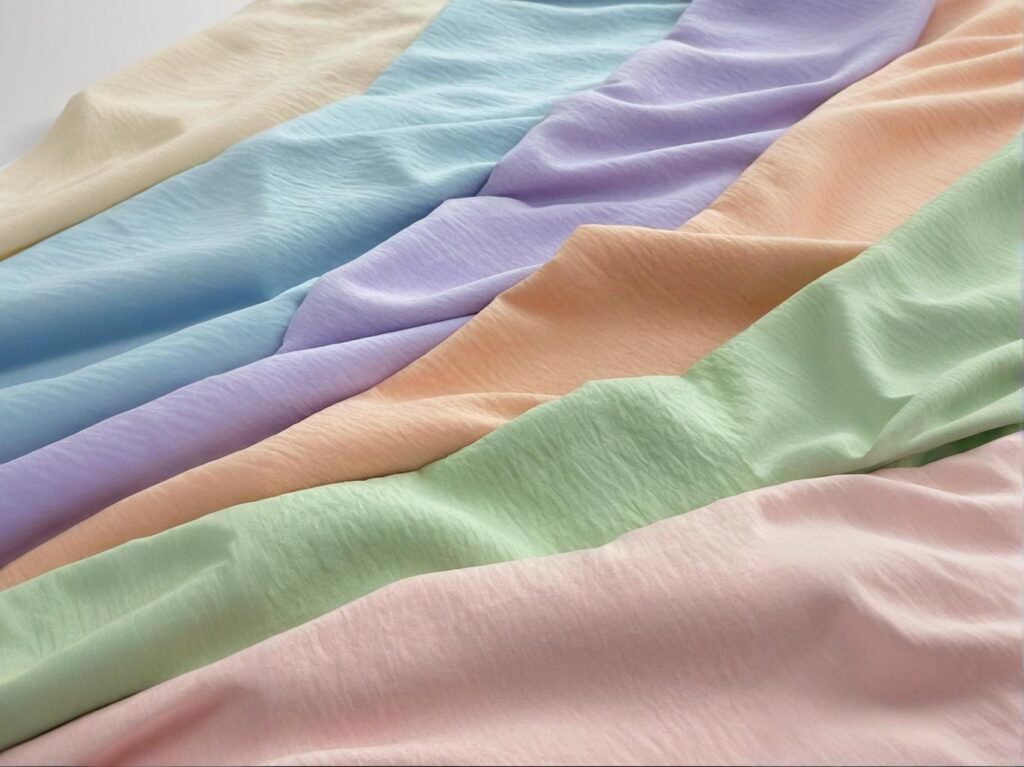
High-end designers turn to cotton silk not only for its comfort and sheen but for its adaptability across garment types. From flowing silhouettes to structured tailoring, cotton silk’s semi-fluid drape and resilience make it ideal for a variety of fashion categories.
Luxury brands use cotton silk for dresses, blouses, scarves, and tailored wear due to its combination of drape, elegance, and comfort. It’s especially popular in resort, bridal, and minimalist collections.
Fashion Applications Across Market Segments
1. Luxury Ready-to-Wear
- Tops, skirts, and wide-leg trousers made from medium-weight cotton silk.
- Blends often feature subtle sheen and texture for visual interest.
2. Evening and Occasion Wear
- 50/50 blends used for gowns, capes, bridal separates, and draped tunics.
- Often paired with lace overlays or metallic thread embroidery.
3. Minimalist and Sustainable Lines
- GOTS-certified cotton silk preferred by eco-conscious designers for minimalist, seasonless collections.
4. Heritage and Cultural Fashion
- India: Chanderi and Maheshwari handloom cotton silk sarees are popular in wedding and festive wear.
- China & Korea: Hanfu or Hanbok-inspired modern fusion garments.
Real Brand Examples
| Brand Name | Use of Cotton Silk | Highlight Feature |
|---|---|---|
| Eileen Fisher | Relaxed silhouettes in earthy tones | Organic cotton silk, GOTS certified |
| Raw Mango (India) | Handloom sarees and jackets | Artisan craft, luxury ethnic fashion |
| COS | Structured minimalist shirts and dresses | Neutral palettes, versatile cuts |
| Zimmermann | Embroidered boho-style dresses and skirts | Romantic flow, blended sheen |
Cotton silk holds prints beautifully, especially when digitally or block printed. Many high-end brands combine cotton silk with artisanal techniques like tie-dye, Shibori, hand-painting, and natural dyeing to elevate visual storytelling in luxury pieces.
What Are the Care and Maintenance Requirements for Cotton Silk Fabric?
Cotton silk, though luxurious, is relatively easier to care for than pure silk — making it more accessible for everyday wear in the luxury segment. However, because it contains silk, it still requires gentle handling to preserve its shine, softness, and structure over time.
Cotton silk fabric should be hand-washed or machine-washed on a gentle cycle with cold water. Avoid wringing or direct sunlight and use mild detergents to maintain its luster.
Best Practices for Cotton Silk Maintenance
1. Washing
- Hand wash with cold or lukewarm water using a mild, pH-neutral detergent.
- For machine use, always select the delicate or silk cycle and place the garment in a mesh bag.
2. Drying
- Avoid wringing the fabric; instead, roll in a towel to absorb moisture.
- Air dry in the shade to prevent fiber weakening and color fading.
3. Ironing
- Use a low heat setting or “silk” setting on your iron.
- Always iron on the reverse side and preferably with a protective cloth layer.
4. Storage
- Store in a cool, dry place, away from direct sunlight.
- Avoid using plastic bags; opt for breathable cotton garment bags.
🧪 Care Comparison Table
| Fabric Type | Ease of Washing | Ironing Difficulty | Shrinkage Risk | Durability After Wash |
|---|---|---|---|---|
| Pure Cotton | High | Low | Medium | High |
| Pure Silk | Low | High | High | Low |
| Cotton Silk Blend | Medium | Medium | Low–Medium | Medium–High |
Many luxury shoppers appreciate the balance cotton silk strikes — easy enough to care for at home, but with a texture elegant enough for fine events. This practicality can improve brand loyalty and garment longevity, especially in fashion lines meant to be versatile and trans-seasonal.
How Can Fashion Brands Source Custom Cotton Silk Fabric at Scale?
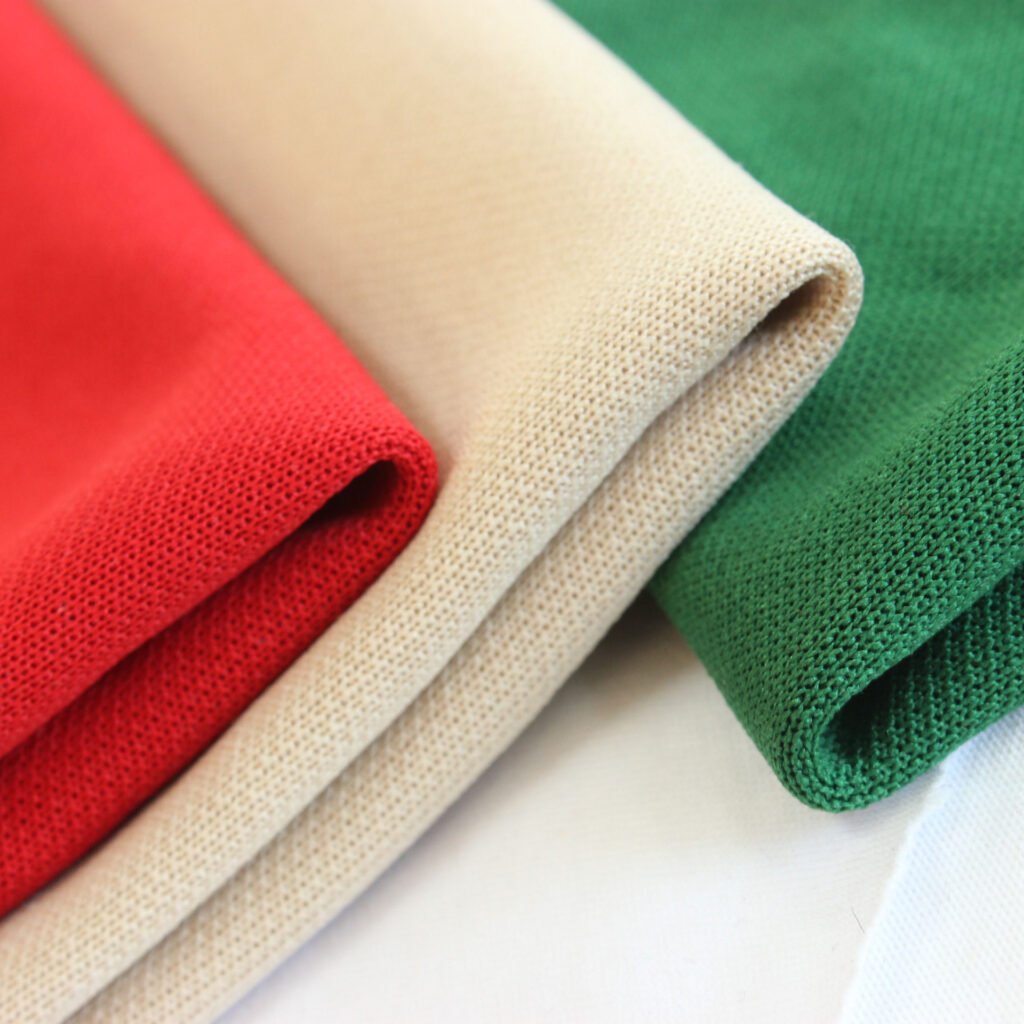
Sourcing high-quality cotton silk requires working with a reliable textile manufacturer that understands both natural fiber engineering and fashion market expectations. The ability to customize blend ratios, GSM weight, weave types, and sustainable certifications is critical for today’s brands.
Fashion brands can source custom cotton silk by partnering with experienced textile manufacturers offering low MOQ, free sampling, and sustainable certifications like GOTS.
B2B Sourcing Checklist
1. Define Application and Blend Ratio
- Loungewear: 70/30 or 80/20 cotton-silk for softness and breathability
- Eveningwear: 50/50 for sheen, structure, and drape
- Shirting: 60/40 for versatility and comfort
2. Choose Weave & GSM
- Plain weave for lightweight basics (70–90 GSM)
- Satin or twill weave for medium to heavy garments (100–140 GSM)
- Jacquard or dobby for premium textured fabrics
3. Evaluate Sustainable Options
- Ask for GOTS-certified organic cotton in the blend
- Confirm use of AZO-free, OEKO-TEX certified dyes
- Request life cycle data or traceability if needed for CSR
4. Sampling and MOQ
- SzoneierFabrics offers:
- Free design
- Fast sampling
- Low MOQ (from 50 meters)
- Bulk production with 100% quality assurance
🏭 Why Source from SzoneierFabrics?
SzoneierFabrics is a trusted fabric R\&D and manufacturing partner in China, with years of experience delivering custom cotton silk solutions to global high-end fashion brands and emerging labels. Whether you’re creating timeless bridal gowns or breathable luxury loungewear, we help you bring your textile vision to life — quickly and affordably.
🧵 A Timeless Fabric for Modern Luxury
Cotton silk fabric isn’t just a material — it’s a narrative of modern fashion’s future. It embodies the softness we crave, the elegance we admire, and the sustainability the world demands. As high-end fashion evolves to become more inclusive, responsible, and tactile, cotton silk will continue to thrive as the silent hero of versatile luxury.
If your brand is looking for the perfect balance between feel and form, SzoneierFabrics is ready to help you create it.
👉 Request a free cotton silk fabric sample today and bring your collection to life.
Can't find the answers?
No worries, please contact us and we will answer all the questions you have during the whole process of bag customization.
Make A Sample First?
If you have your own artwork, logo design files, or just an idea,please provide details about your project requirements, including preferred fabric, color, and customization options,we’re excited to assist you in bringing your bespoke bag designs to life through our sample production process.


